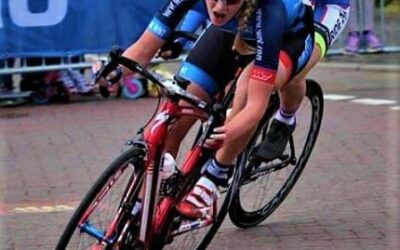Part Two
In part one we spoke about knee pain; today is about lower back pain.
—————————————————————————————-
Anyone out there a cyclist who has had or is currently suffering with lower back pain?
Well don’t worry you are not the only one! An interesting piece of research conducted by Norwegian scientists found 94% of the 116 professional road cyclists they investigated had suffered an overuse injury during the previous year, 45% of those injuries being lower back pain. This as actually more than those suffering with knee pain which came out at 23% of all overuse injuries during that period. So, with cycling being a low impact sport why do we have so many problems with our lower backs?
Now it must be noted, like we said in part one, that injury is multifactorial. Lower back pain can stem from factors such as poor technique, poor bike fit, lack of conditioning for the back, glutes and tummy muscles, lack of mobility in areas of the spine or most likely a combination of a few of these. Having your stem too long or having your saddle to handlebar drop too large can increase the chance of developing lower back pain. However, what is interesting, a study investigating the percentage of professional cyclists suffering from lower back pain showed, although the cyclists had access to advanced facilities, including bike geometry set up’s, a percentage still suffered or had suffered with lower back pain. So, can we blame it all on the bike? Let’s look at some of the other factors, how they may prevent lower back pain and how-to self-treat accordingly.
Technique – Cyclists can often overpull with the back and arms rather than power through the glutes. Make sure your switching on your glutes rather than pulling into your back when your cycling, particularly when cycling up hill. You can practise this by squeezing your glutes as you push down and pull up on the pedals.
Conditioning – Often the reason cyclists’ power more through their back rather than through their glutes is that the muscles in the glutes are poorly conditioned therefore the strain is distributed into the lower back. Or it may be that the glutes are firing but it’s the tummy muscles that aren’t engaging to support the lower back or just that the deep lower back stabilising muscles are not conditioned enough to cope with the load being place upon them. Below is a link to some simple exercises, recommended in cycling weekly, that are great for strengthening the lower back, glutes, core and hamstrings to build tolerance to load.
Mobility and stretching– Sometimes lower back pain may not be due to strength issues but rather mobility issues. Restrictions higher up in the thoracic spine can place excess load into the lumbar spine causing a build-up of compression in the lower back. Restrictions in the lower back itself can cause a build-up of tension in the muscles of the lower back causing pain and discomfort. It is important for the whole spine to move freely and to be balance with the rest of the body. Stretching is also important, particularly the hip flexors. The hip flexors include the tensor fascia late and the iliopsoas which are often very tight in cyclists due to the position on the bike. Tight hip flexors can pull into the back creating more tension in the joints and muscles. Stretching the glutes is also important as they attached into the joints in the back so the more flexible these are the better your spinal mobility will be. Below are some links to British Cycling spinal mobility videos which are a great way to keep the spine mobile and also a picture of how to stretch the hip flexors and glutes.
Upper body mobilisation routine here.
Hip Flexors:

Glute stretch:

What we do the rest of our day – it’s important to remember we might spend 1-3 hours on a bike a couple of times a week but there are 168 hours in a week. So, what we do with the rest of our time has a big part to play with our physical well-being when cycling. Think POSTURE. At work, if you are desk based, make sure you have had an ergonomic check on your chair, your back pain might just be down to a bad chair at work! Make sure your getting enough sleep, lack of sleep can affect the ability of the body to heal and repair tissues. Think WATER and FOOD – what are you eating, how much are you drinking? Check these areas and you may find some areas of deficit that may be affecting your body’s ability to recover from training sessions and repair damaged tissues.
—————————————————————————————-
Osteopathy – How can we help? Well as Osteopaths we are very good at taking a global approach to treatment. We will not just look at your back pain, but we will look at it in relation to the rest of your body. Look at any muscle imbalances that may exist, look at your biomechanics, look at your mobility whilst taking into consideration all the factors above that may be affecting your ability to heal. We are also very good at tailor making home care advice to suit the individual requirements from what has been flagged up in the consultation/treatment. Thinking about sorting out that lower back pain that has been bothering you? Find osteopathy at the Good Health Centre Leeds, why wait – book in to see myself or one of my fellow practitioners.
Brit Tate (Osteopath at The Good Health Centre Leeds. Ex-cyclist now triathlete.)



0 Comments